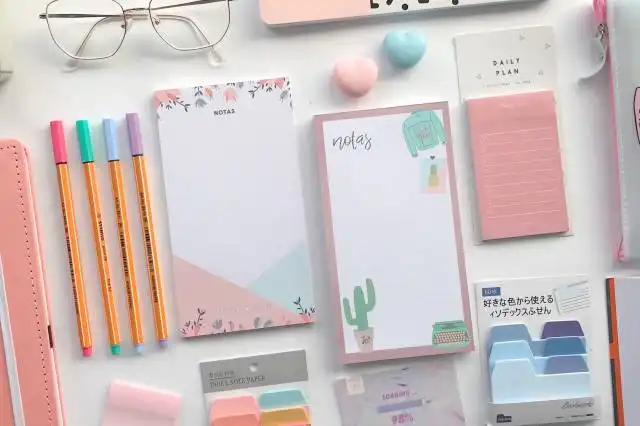Start a Leather Business
Stitching Success with Luxury Leather: Unleashing Your Inner Fashion Mogul
| Updated


LEATHER BUSINESS
Dive into the world of fashion and lifestyle by beginning a leather business, a venture that handcrafts or resells high-quality leather goods. Here, your merchandise might range from timeless briefcases, stylish handbags, edgy moto jackets to sophisticated couches. Who knew becoming a connoisseur of hide and skin would not only appeal to your posh tastes but could also be your cash cow? With the right eye for quality and design, your products could soon be the talk of the town, creating a booming business tailored in luxury.
Jump to Business Plan
RELATED BUSINESS IDEAS
Browse ALL Arts & Crafts Business Ideas
Discover Your Perfect Domain
Unlock the door to your online success with our hand-picked selection of premium domain names. Whether you're starting a new venture or rebranding an existing one, the right domain can set the tone for your digital presence. Browse through our curated list, each with its unique potential to enhance your brand's visibility and credibility.
LEATHER MINI BUSINESS PLAN
This a quick reality check to help you identify the strengths and weaknesses of your business concept before you dive in.
Raw Materials:
- Initial Investment: Estimate $10,000-$25,000 for quality leather and supplementary materials.
- Supplier: Develop a relationship with a reliable and ethical leather supplier.
Manufacturing/Production:
- Equipment: Invest in high-quality tools and machinery if producing in-house which may cost around $5000-$10,000.
- Outsourcing: Alternatively, find a dependable manufacturer if planning to outsource production.
Marketing:
- Online Presence: Invest in an attractive, user-friendly website and engage in SEO practices.
- Social Media: Regularly post—3 times a week—on social media platforms popular with your target demographic.
Sales:
- E-commerce: Set up an online store to increase visibility and sales.
- Wholesale: Partner with stores and boutiques that cater to your target market.
Cost Control:
- Inventory: Manage the inventory efficiently to prevent dead stock.
- Overhead Costs: Rent, electricity and wages—budget these to stay within 15-20% of expected monthly sales.
Business Operations:
- Customer Service: Provide excellent customer service for repeat business.
- Quality Control: Regularly check on the quality of your products to maintain your brand standards.
While these are generalized tips, remember the specifics will depend on the scale of your business, your target market, and location. Keep adapting your strategy based on your learnings!
NOT WHAT YOU HAD IN MIND? Here are more ideas



Browse ALL Arts & Crafts Business Ideas
Grab Your Business Website Name
Before you get caught up in the whirlwind of setting up your business, invest in a domain name. It's a small but significant step that lays the foundation for your brand and makes it easier for customers to find and trust you. Just like you wouldn't build a house without securing the land first, don't build a business without securing your domain name.
"Why? Can't that wait?" Here's why it shouldn't
Step 1: Determine if Starting a Leather Business is Right for You
Breakdown of Startup Expenses
Before starting a leather business, it is important to understand the startup costs associated with the venture. This includes the cost of materials such as leather, hardware, and tools. It is also important to consider the cost of any necessary licenses or permits, as well as the cost of renting or purchasing a workspace. Additionally, the cost of marketing, advertising, and website development should be taken into account. Finally, it is important to consider the cost of any labor that may be needed to help with the production of the leather goods.
Breakdown of Ongoing Expenses
After the startup costs have been taken into account, it is important to consider the ongoing expenses associated with running a leather business. This includes the cost of materials, such as leather, hardware, and tools. It is also important to consider the cost of any necessary licenses or permits, as well as the cost of renting or purchasing a workspace. Additionally, the cost of marketing, advertising, and website maintenance should be taken into account. Finally, it is important to consider the cost of any labor that may be needed to help with the production of the leather goods.
Examples of Ways to Make Money
There are a variety of ways to make money with a leather business. One option is to create custom leather goods, such as wallets, handbags, and belts, and sell them directly to customers. Another option is to create a line of leather goods and sell them wholesale to retailers. Additionally, leather goods can be sold online through websites or through third-party marketplaces such as Etsy or Amazon. Finally, leather goods can be sold at craft fairs and other events.
Step 2: Name the Business
When it comes to naming a business, it is important to come up with something that is memorable and unique. It should also be something that reflects the purpose of the business. Consider using words that evoke a sense of quality and craftsmanship, such as “leather” or “crafts”. Additionally, it is important to make sure the name is not already taken by another business. Researching the name on the internet and in the local area is a good way to make sure it is not already in use.
It is also important to consider the domain name when naming the business. It should be something that is easy to remember and type into a web browser. If the domain name is not available, consider using a variation of the name. For example, if the desired domain name is taken, try adding a word like “shop” or “studio” to the end of the name.
When it comes to registering the business name, it is important to check with the local government to make sure the name is available. Additionally, it is important to make sure the name does not infringe on any trademarks. If the business is operating in multiple states, it is important to check with each state’s government to make sure the name is available.
Finally, it is important to consider the branding of the business when naming it. The name should be something that is easy to remember and reflects the quality of the business. Additionally, it should be something that can be used in marketing materials and on the business website.
Step 3: Create a Business Plan
Creating a business plan is an essential step in starting a leather business. The business plan should include a description of the business, the target market, the products or services offered, the competitive landscape, the marketing and sales strategies, the operational plan, and the financial plan.
The description of the business should include an overview of the business, the mission statement, and the goals and objectives. It should also include the legal structure of the business, such as whether it is a sole proprietorship, partnership, or corporation.
The target market should include the demographic and psychographic characteristics of the target customer. This should include the age, gender, income level, and interests of the target customer. It should also include the geographic area where the business will be located and the size of the target market.
The products or services offered should include a description of the products or services, the pricing structure, and the competitive advantages of the products or services. It should also include the production process, the materials used, and the suppliers.
The competitive landscape should include an analysis of the competition, their products or services, their pricing structure, and their competitive advantages. It should also include an analysis of the strengths and weaknesses of the competition.
The marketing and sales strategies should include the strategies used to reach the target market, such as advertising, public relations, and social media. It should also include the strategies used to generate sales, such as discounts, promotions, and loyalty programs.
The operational plan should include the organizational structure of the business, the staffing needs, the location of the business, and the systems and processes used to manage the business. It should also include the systems and processes used to manage the production, inventory, and customer service.
The financial plan should include the startup costs, the ongoing expenses, and the expected revenue. It should also include the financial projections for the first three years of the business, such as the expected sales, expenses, and profits.
Step 4: Obtain Necessary Licenses and Permits
When starting a leather business, it is important to obtain the necessary licenses and permits. Depending on the type of business, the licenses and permits required may vary. For example, if the business is a retail store, a business license, a sales tax license, and a zoning permit may be required. If the business is an online store, a business license and a sales tax license may be needed. Additionally, if the business is manufacturing leather goods, a manufacturing license may be required.
How to Obtain Licenses and Permits
In order to obtain the necessary licenses and permits, contact the local business licensing office. They will be able to provide information on the types of licenses and permits needed for the business, as well as the application process. Additionally, they may be able to provide guidance on the process and help with any questions. It is important to note that the process of obtaining licenses and permits can be time consuming, so it is important to plan accordingly.
Cost of Licenses and Permits
The cost of licenses and permits will vary depending on the type of business and the location. Generally, the cost of a business license and sales tax license will be minimal. However, the cost of a manufacturing license or zoning permit may be more expensive. It is important to research the cost of licenses and permits before starting the business to ensure that the business can afford the cost.
Benefits of Obtaining Licenses and Permits
Obtaining the necessary licenses and permits is important for any business, as it ensures that the business is operating legally. Additionally, having the proper licenses and permits may help to attract customers and build trust in the business. Furthermore, having the proper licenses and permits may be necessary for certain types of financing, such as bank loans or venture capital. Therefore, it is important to obtain the necessary licenses and permits before starting the business.
Step 5: Find a Suitable Location
When choosing a location for a leather business, there are several factors to consider. First, the location should be accessible to customers and suppliers. Second, the location should have enough space to accommodate the business’s needs. Third, the location should be in a safe area with good security. Fourth, the location should be in an area with a good customer base. Finally, the location should have good public transportation access.
Cost of Renting a Space
The cost of renting a space for a leather business will depend on the size of the space and the location. Generally, the cost of rent will be higher in more desirable areas, such as downtown areas. Additionally, the cost of rent will also depend on the length of the lease. For example, a long-term lease may be more expensive than a short-term lease.
Other Costs
In addition to the cost of rent, there are other costs associated with finding a suitable location. These costs include utilities, insurance, and taxes. Additionally, the business may need to invest in renovations or improvements to the space, such as installing new lighting or painting the walls.
Finding a Suitable Location
Finding a suitable location for a leather business can be a challenge. It is important to research different locations and compare the costs and benefits of each. Additionally, it may be helpful to consult with a real estate agent or a business advisor to find the best location for the business.
Step 6: Purchase Necessary Equipment
When starting a leather business, there are certain pieces of equipment that are necessary for success. These include a leather cutting machine, a leather sewing machine, a leather stamping machine, a leather dyeing machine, and a leather finishing machine. Additionally, you will need tools such as a leather punch, a leather skiver, a leather splitter, and a leather stitcher. All of these pieces of equipment are necessary for creating high-quality leather products.
Where to Purchase
When purchasing the necessary equipment for your leather business, it is important to find reliable suppliers. You can purchase the equipment from online retailers, local stores, or even directly from the manufacturer. It is important to research the different suppliers to ensure that you are getting the best quality equipment at the best price. Additionally, you may want to consider purchasing used equipment as it can be more cost-effective.
Cost
The cost of the equipment for a leather business can vary greatly depending on the type of equipment you need and the supplier you purchase from. Generally, the cost of the equipment can range from a few hundred dollars to several thousand dollars. Additionally, you may need to factor in the cost of shipping and taxes when purchasing the equipment.
Maintenance
In addition to the cost of the equipment, it is important to factor in the cost of maintenance. Regular maintenance is necessary to ensure that the equipment is running properly and efficiently. This may include regular cleaning and lubrication, as well as replacing any worn or broken parts. Additionally, you may need to hire a professional to perform more extensive maintenance on the equipment.
Step 7: Market Your Business
One of the most important steps in starting a leather business is to market it. There are many ways to do this, including using social media, creating a website, and advertising in local publications. Social media is a great way to get the word out about your business and reach a large audience. You can create a business page on platforms like Facebook, Twitter, and Instagram to post updates and announcements. You can also create a website to showcase your products and services. Additionally, you can advertise in local publications such as newspapers, magazines, and radio stations.
Tips for Effective Marketing
When marketing your business, it is important to be consistent and create a plan. Make sure to create a budget for marketing and stick to it. Additionally, it is important to be creative and think of new ways to reach potential customers. You can also use customer testimonials and reviews to help build trust and credibility. Finally, it is important to track your progress and measure the success of your marketing efforts. This will help you determine what is working and what needs to be improved.
Step 8: Hire Employees
When it comes to hiring employees, it is important to find the right people for the job. Start by creating a detailed job description that outlines the qualifications and duties of the position. Once you have a job description, post the position on job boards and social media sites. You can also reach out to local colleges and universities to find potential candidates. Additionally, consider offering internships to students who are interested in the leather industry.
Training Employees
Once you have hired employees, it is important to provide them with the necessary training. Start by providing an overview of the company and its mission. Then, provide detailed instructions on how to use the equipment and materials. Additionally, provide employees with safety training to ensure that they are aware of the potential hazards associated with working with leather. Finally, provide employees with customer service training to ensure that they are providing excellent customer service.
Step 9: Monitor Your Business
Monitoring your business is an important part of running a successful leather business. It is important to keep track of your sales, expenses, and profits. Additionally, it is important to keep track of customer feedback and reviews. This will help you to identify areas that need improvement and areas that are performing well. It is also important to stay up to date on the latest trends in the leather industry. This will help you to stay ahead of the competition and ensure that your business is successful.
Tools for Monitoring Your Business
There are a variety of tools available to help you monitor your business. You can use accounting software to track your sales, expenses, and profits. You can also use customer feedback tools to track customer reviews and feedback. Additionally, you can use market research tools to stay up to date on the latest trends in the leather industry. These tools will help you to stay on top of your business and ensure that it is successful.
Benefits of Monitoring Your Business
Monitoring your business is beneficial in a variety of ways. It will help you to identify areas that need improvement and areas that are performing well. Additionally, it will help you to stay ahead of the competition and ensure that your business is successful. Finally, it will help you to make informed decisions about your business and ensure that it is profitable.
EXPLORE MORE CATEGORIES
Browse ALL Business Idea Categories
TAKE THE NEXT STEPS










